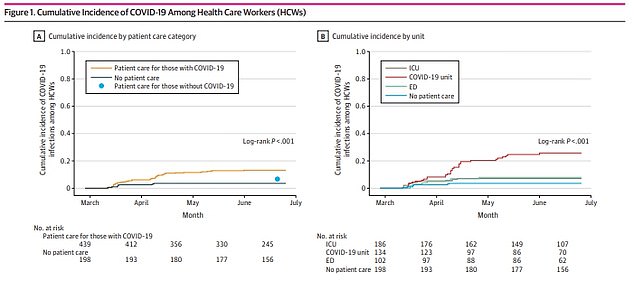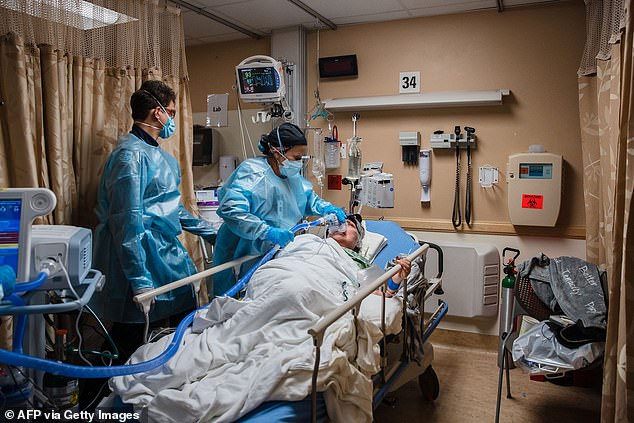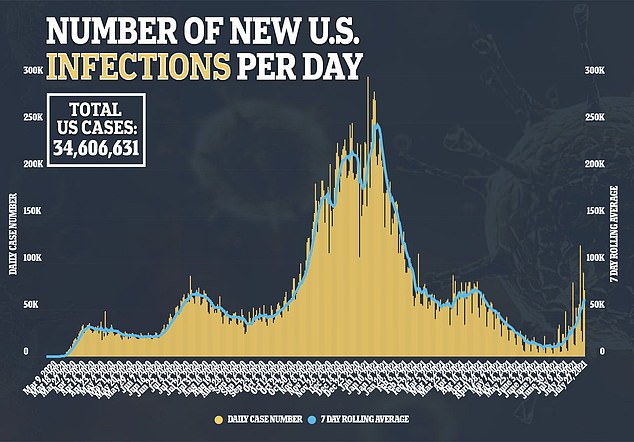Health care workers who worked in COVID-19 wards were more likely to contract the virus than their peers, a new study finds.
Researchers from Amsterdam University and Vrije Universiteit Amsterdam analyzed data from each of their university hospitals.
They found that frontline workers interacting with COVID-19 patients were four times more likely to be infected than those in other areas of the medical center.
However, instead of primarily contracting the virus from patients, the workers were spreading the virus among each other.
The data are surprising and provides more insight into how the virus that took over the world managed to spread in hospitals.

Doctors who worked in COVID wards were up to four times more likely to contract COVID than their peers, and often spread the virus to one another

Doctors and patients did not often spread the virus to one another, a cluster analysis found
Researchers, whose findings were published in JAMA Open Network on Wednesday, looked at the two hospitals between March 23, 2020 and June 25, 2020.
They collected data from antibody tests performed on doctors and questionnaires they answered on COVID-19 and symptoms of the virus.
The Dutch team also performed epidemiologic analysis to discover transition clusters within the hospitals.
In total, 801 health care workers were included in the study.
Of the 439 included in the study who worked in COVID-19 wards, 54 tested positive for the virus. or 13.2 percent.
Workers who served in in-patient care but not in COVID wards accounted for 164 people – and 11. or 6.7 percent, contracted the virus.
Of 198 health care workers not working in patient care at all, only seven – or 3.6 percent – were found to have the virus.
This means that doctors who worked in COVID wards were up to four times as likely to contract the virus as their peers, and twice as likely as those who worked in non-COVID in-patient wards.
Analysis of the spread within hospitals found that there were three potential case clusters exclusively between the health care workers.
While transmission between patients and workers was possible, a majority of the infections suffered by the workers were contracted from a fellow worker.


‘Patient-to-patient and HCW-to-patient transmissions were unlikely because patients admitted to COVID-19 wards had NAAT-confirmed SARS-CoV-2 infection or were highly suspected of SARSCoV-2 infection based on symptoms or radiological findings at time of admission,’ the researchers wrote.
‘There was additionally no evidence of patient-to-HCW transmission based on our phylogenetic analysis, and there was no overlap between the patient admission dates and HCW working shifts in clusters A and B.’
The team also found correlation between workers who worked the same shifts as each other falling into the same clusters – allowing them to potentially identify when COVID was spread from one to another.
The data may not be complete, however.
Some doctors who did contract COVID from a patient may have stayed home from work when feeling symptoms, and their data was never registered in the study.
In April, it was estimated that nine Dutch health care workers had died because of COVID.
Source link : https://www.dailymail.co.uk/health/article-9835351/Health-care-workers-worked-COVID-19-wards-likely-contract-virus-other.html











